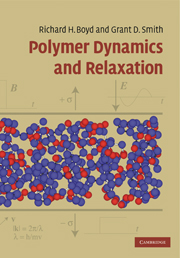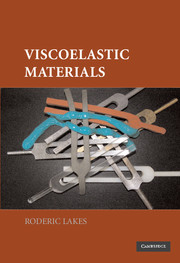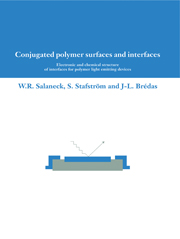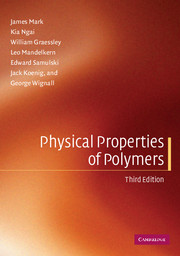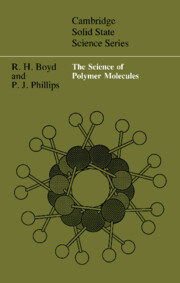Polymer Dynamics and Relaxation
Polymers exhibit a range of physical characteristics, from rubber-like elasticity to the glassy state. These particular properties are controlled at the molecular level by the mobility of the structural constituents. Remarkable changes in mobility can be witnessed with temperature, over narrow, well defined regions, termed relaxation processes. This is an important, unique phenomenon controlling polymer transition behaviour and is described here at an introductory level. The important types of relaxation processes from amorphous to crystalline polymers and polymeric miscible blends are covered, in conjunction with the broad spectrum of experimental methods used to study them. In-depth discussion of molecular level interpretation, including atomistic level computer simulations and applications to molecular mechanism elucidation, are discussed. The result is a self-contained approach to polymeric interpretation suitable for researchers in materials science, physics and chemistry interested in the relaxation processes of polymeric systems.
- Phenomenological descriptions are introduced along with the principles underlying the experimental methods in order to help understanding
- Many chapters have an appendix to develop the molecular theory, and to include connection with simulations
- Results from experimental methods, and of simulations and theories, are included where appropriate
Reviews & endorsements
"Boyd and Smith (both at the U. of Utah) have written an authoritative text describing the relaxation processes of polymers and the many methods used for their study that will be essential reading for researchers and graduate students of materials science, physics, and chemistry. The initial 5 chapters are devoted to methodology, with descriptions of mechanical and dielectric relaxation, NMR spectroscopy, dynamic neutron scattering, and molecular dynamics simulations of amorphous polymers. The three stages from primary transition region, secondary (subglass) relaxations, and the transition from melt to glass of amorphous polymers are described in separate chapters, with discussion of the molecular basis of the transition from melt to glass. The volume concludes with discussion of semi-crystalline polymers and miscible polymer blends, including the models for miscible blend dynamics. Two appendices describe the Rouse model and site models for localized relaxation." Book News, Inc.
Product details
August 2010Paperback
9780521152914
266 pages
244 × 170 × 14 mm
0.43kg
Available
Table of Contents
- Preface
- Part I. Methodology:
- 1. Mechanical relaxation
- 2. Dielectric relaxation
- 3. NMR spectroscopy
- 4. Dynamic neutron scattering
- 5. Molecular dynamics (MD) simulations of amorphous polymers
- Part II. Amorphous Polymers:
- 6. The primary transition region
- 7. Secondary (subglass) relaxations
- 8. The transition from melt to glass and its molecular basis
- Part III. Complex Systems:
- 9. Semi-crystalline polymers
- 10. Miscible polymer blends
- Appendix 1. The Rouse Model
- Appendix 2. Site models for localized relaxation
- Index.

